-
19 November – 17 December 2020 – 7pm / Online Platform
Audiosphere Audio Society
A Society of Shared Listening and Dialogue
Listening together and sharing that which is heard. This is the aim of the first edition of Audio Society, which gets under way with the exhibition Audiosphere. Sound Experimentation 1980–2020 and, on this occasion, features the participation of five pre-eminent figures in the sphere of art, sound and aural culture: María Andueza, Alberto Bernal, José Luis Espejo, Marina Hervás and Susana Jiménez. Each one has devised a listening route based around works in the show, in addition to the proposal put forward by the exhibition’s creator — implemented in the listening device with which the standard visit is made.
The recommendations or alternative routes of our five “guides”, accompanied by concise explanatory notes to be read or listened to, can be following independently, accessing the available content below. Additionally, people who wish to do so can participate as listeners or share their experiences, concerns and comments in the so-called Sound Assemblies in our Audio Society. These will take place on consecutive Thursdays in the months of November and December, and will be accompanied and moderated by each of the five “mediators”.
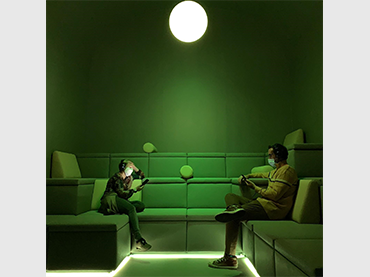
-
28 September 2020 – 11 January 2021
Concha Jerez. What Is Said and What Is Hushed
On the stairwells of the Sabatini Building echo unheard voices, forgotten names, spaces of ignominy. We cross the corridor in silence and travel through past words that have been, conscientiously, buried in endless scribbles.
From trap to trap, a form of divertimento put forward by the artist, we travel through different rooms: places of collective and individual memory, inhabited by images of denouncement, pain and personal experiences. A memory stolen from us, one that remains concealed yet, at the same time, is revealed unconsciously, between what is said and what is hushed.
Through this journey around the exhibition Concha Jerez. Our Memory Is Being Stolen, we approach the artist’s reflections on some of the events that form our recent history, as witnesses and protagonists in the dialogue between the artist and the historical building housing her work.
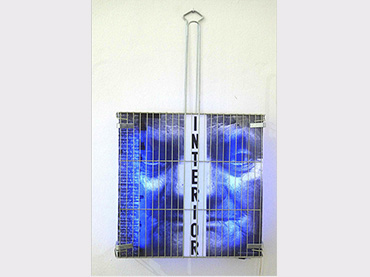
-
11 November 2020 – 1 March 2021
Disonata. This Voice Starts to Exist Before You Hear it
As a bona-fide disonata, this journey offers multiple readings and possibilities: irony, sarcasm, nihilism; the poetic; pure sound; the objectual and the political. Not only views but also experiences can come to pass in the exhibition rooms, coordinated by people from the mediation team.
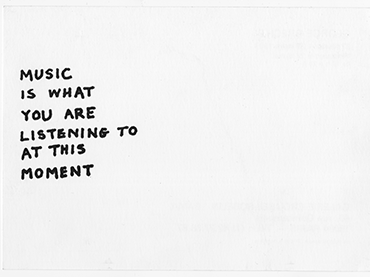
-
2 December 2020 – 14 April 2021 – 5pm / (Check programme)
Everything Is Sound
Sound Tours for Teachers of Secondary Education
The Listening School, the Museo’s teacher-training project, sets forth a programme of sound tours around the exhibitions Audiosphere. Sound Experimentation 1980–2020, Disonata. Art in Sound up to 1980, and Niño de Elche. Invisible Auto Sacramental: A Sonic Representation from Val del Omar. The aim is to build a space of collective listening and facilitate tools that develop into a new way of moving through the Museo with students.
These tours are structured in two parts: first, an independent tour or group tour with limited numbers around the aforementioned temporary exhibitions, following a set route made up of a series of pre-selected works. Second, an encounter in different spaces inside the Museo to share experiences, paying attention to the sounds heard and discovering how we resonate together.

Eardrum
A Project of Transversal Mediation Around Sound and Aural Culture
- Guided Tour
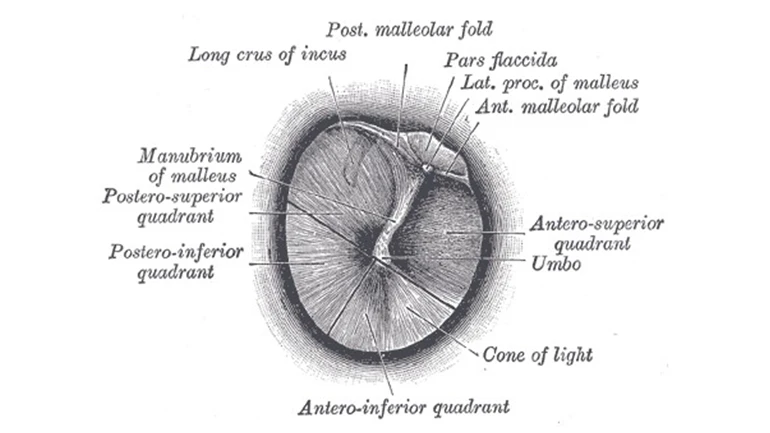
Held on 01 Nov 2020
An eardrum is a membrane, an outer and inner limit. The eardrum vibrates to the world, transmitting its activity and vibrations towards the inner part of our body. This extremely thin but highly elastic and resistant tissue receives strikes carried by the air to let codes pass through in the form of nerve impulses that are recognisable to the brain. The eardrum is oblique and translucent. It is a microphone, a drum, a speaker. It grips a hammer that strikes an anvil that shakes a stirrup that moves a liquid that, in its movement, generates electricity which later… Later it’s all sound: shouts, whispers, explosions, words.
At the present time, a number of the Museo’s exhibitions converge — Disonata. Art in Sound up to 1980; Audiosphere. Sound Experimentation 1980–2020; Concha Jerez. Our Memory Is Being Stolen; Niño de Elche. Invisible Auto Sacramental: A Sonic Representation from Val del Omar — placing sound (or sound art) at the centre. Different, at times opposing, approaches which reverberate around the Museo’s rooms simultaneously and trigger a conversion of our passive capacity to hear into active listening, reminding us, to paraphrase the artist Muntadas, that “perception requires participation”. Listening with the eardrum, yes, but also with our eyes, with our skin, by reading, by moving. Active listening, which is profound. Hearing by thinking.
With that in mind, the Museo’s Education Area sets in motion a series of actions, listening journeys, encounters and mediation projects to accompany and amplify these exhibitions, inviting participation for anyone interested in absorbing and reflecting on sounds to form a diverse group of hearers and listeners that can, at the same time, transmit back their experiences and impressions.
Sponsorship
Education programme developed with the sponsorship of the Banco Santander Foundation
Organised by
Museo Reina Sofía
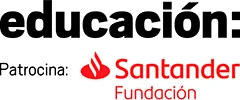
Más actividades

Difficulty. Forms and Political Effects of Deviation in Writing and Contemporary Art
23 February – 14 December 2026 – Check programme
Difficulty. Forms and Political Effects of Deviation in Writing and Contemporary Art is a study group aligned towards thinking about how certain contemporary artistic and cultural practices resist the referentiality that dominates the logics of production and the consumption of present-day art. At the centre of this proposal are the concepts of difficulty and deviation, under which it brings together any procedure capable of preventing artistic forms from being absorbed by a meaning that appears previous to and independent from its expression. By ensuring the perceptibility of their languages, difficulty invites us to think of meaning as the effect of a signifying tension; that is, as a productive and creative activity which, from the materiality of art objects, frees aesthetic experience from the representational mandate and those who participate in it from the passiveness associated with tasks of mimesis and decoding.
The economy of the referential norm translates the social logic of capitalism, where insidious forms of capturing subjectivity and meaning operate. In the early 1980s, and adopting a Marxist framework, poet Ron Silliman highlighted how this logic entailed separating language from any mark, gesture, script, form or syntax that might link it to the conditions of its production, rendering it fetichised (as if without a subject) and alienating its users in a use for which they are not responsible. This double dispossession encodes the political strategy of referential objectivity: with no subject and no trace of its own consistency, language is merely an object, that reality in which it disappears.
The political uses of referentiality, more sophisticated today than ever before, sustain the neoliberal-extractivist phase of capitalism that crosses through present-day societies politically, economically and aesthetically. Against them, fugitive artistic practices emerge which, drawing from Black and Queer studies and other subaltern critical positions, reject the objective limits of what exists, invent forms to name what lies outside what has already been named, and return to subjects the capacity to participate in processes of emission and interpretation.
Read from the standpoint of artistic work, the objective capture of referentiality may be called transparency. Viewed from a social contract that reproduces inequality in fixed identity positions, transparent in this objectivity are, precisely, the discourses that maintain the status quo of domination. Opposite the inferno of these discourses, this group aims to collectively explore, through deviant or fugitive works, the paradise of language that Monique Wittig encountered in the estranged practices of literature. For the political potency of difficulty — that is, its contribution to the utopia of a free language among equals — depends on making visible, first, its own deviations; from there, the norm that those deviations transgress; and finally, the narrowness of a norm which in no way exhausts the possibilities ofsaying, signifying, referring and producing a world.
From this denouncement of referential alienation, fetishisation and capture, Difficulty. Forms and Political Effects of Deviation in Writing and Contemporary Art turns its attention to the strategies of resistance deployed by contemporary artists and poets. Its interest is directed towards proposals as evidently difficult or evasive as those of Gertrude Stein, Lyn Hejinian, Theresa Hak Kyung Cha, Kameelah Janan Rasheed, Kathy Acker, María Salgado and Ricardo Carreira, and as seemingly simple as those of Fernanda Laguna, Felix Gonzalez Torres and Cecilia Vicuña, among other examples that can be added according to the desires and dynamics of the group.
The ten study group sessions, held between February and December, combine theoretical seminars, work with artworks from the Museo Reina Sofía’s Collections and exhibitions, reading workshops and public programs. All these formats serve as spaces of encounter to think commonly about certain problems of poetics — that is, certain political questions — of contemporary writing and art.
Difficulty. Forms and Political Effects of Deviation in Writing and Contemporary Art inaugurates the research line Goodbye, Representation, through which the Museo Reina Sofía’s Studies Directorship seeks to explore the emergence of contemporary artistic and cultural practices which move away from representation as a dominant aesthetic-political strategy and redirect their attention toward artistic languages that question the tendency to point, name and fix, advocating instead for fugitive aesthetics. Over its three-year duration, this research line materializes in study groups, seminars, screenings and other forms of public programming.

CLINIC 2628. A Community of Writing and Research in the Arts
February – October 2026
Clinic 2628 is a project which supports and brings together writings which stem from the intention to offer a space and sustainable time for research work in art and culture. Framed within an academic context which is increasingly less receptive to the forms in which thinking happens and is expressed, the aim is to rescue the academic from its neoliberal trappings and thus recover the alliance between precision and intuition, work and desire. A further goal is to return writing to a commons which makes this possible through the monitoring of processes and the collectivisation of ideas, stances, references and strategies.
The endeavour, rooted in a collaboration between the Museo Reina Sofía’s Studies Directorship and the Artea research group, via the i+D Experimenta project, is shaped by three annual editions conceived as spaces of experimentation, discussion and a demonstration of writings critical of what is put forward by today’s academia.
What forces, forms and processes are at play when writing about art and aesthetics? In academia, in museums and in other cultural institutions, the practice of writing is traversed by productivist logics which jeopardise rhythms of research and experimentation. The imposition of both scientism inherent in the structure of “the paper” and the quantifying of results which demand a criterion of quality and visibility sterilise and smoothen, from the outset, the coarseness that is particular to writing understood from the concrete part of language: phonic, graphic, syntactic and grammatical resistance connecting the language user to the community the language unites and activates. They also sterilise the roughness enmeshed in the same desire to write, the intuitive, clear and confusing pathways that once again connect the writer to those reading and writing, participating in a common good that is at once discovered and produced.
The progressive commercialisation of knowledge propelled by cognitive capitalism moves further away from the research and production of knowledge in artworks and artistic languages and practices. The work of curators and archive, criticism, performances and essays formerly saw a horizon of formal and emotional possibilities, of imagination that was much broader when not developed in circumstances of competition, indexing and impact. Today, would it be possible to regain, critically not nostalgically, these ways; namely, recovering by forms, and by written forms, the proximity between art thinking and its objects? How to write in another way, to another rhythm, with no more demands than those with which an artwork moves towards different ways of seeing, reading and being in the world?

Cultural Work
Thursday, 12 February 2026 – 5:30pm
This series is organised by equipoMotor, a group of teenagers, young people and older people who have participated in the Museo Reina Sofía’s previous community education projects, and is structured around four themed blocks that pivot on the monstrous.
Session number two looks to approach film as a place from which cultural work is made visible and processes of production engage in dialogue with artistic creation. From this premise, the session focuses on exploring how audiovisual content is produced, assembled and distributed, from the hands that handle the images to the bodies that participate in its circulation. The aim is to reflect on the invisible effort, precarity and forms of collaboration that uphold cultural life, that transform the filmic experience into an act that recognises and cares for common work.

The (legal) person and the legal form. Chapter II
8, 12, 15 January, 2026 – 16:00 to 19:00
As part of the Studies Constellation, the Study Directoship’s annual fellowship, art historian and theorist Sven Lütticken leads the seminar The (Legal) Person and the Legal Form: Theoretical, Artistic, and Activist Commitments to foster dialogue and deepen the hypotheses and questions driving his research project.
This project, titled Unacting Personhood, Deforming Legal Abstraction, explores the dominance of real abstractions—such as exchange value and legal form—over our processes of subjectivation, and asks how artistic practices can open up alternative ways of representing or performing the subject and their legal condition in the contemporary world.
The seminar consists of eight sessions, divided into three chapters throughout the academic year. While conceived as non-public spaces for discussion and collective work, these sessions complement, nourish, and amplify the public program of the Studies Constellation.
In this second chapter of the seminar, the inquiry into the aesthetics and politics of legal form continues with three sessions that pick up the discussions held in Chapter I but propose new lines of flight. The first session focuses on international law via the writings of the British author China Miéville, which allows us to reconsider the notion of the legal form –following Evgeny Pashukanis— and, through it, a variety of (people’s) tribunals. While the crucial concept of the legal person –as the right-holder central to the form of law— was debated in Chapter I, the second session focuses on attempts to extend personhood not (just) to corporations, but rather to nonhuman animals or ecosystems. Finally, the third session poses the question: how can groups and networks use officially recognized organizational forms (such as the foundation or the cooperative) and/or use a collective persona (without necessarily a legal “infrastructure” to match) to act and represent themselves?

Oliver Laxe. HU/هُوَ. Dance as if no one were watching you
Tuesday, 16 December 2025 – 7pm
As a preamble to the opening of the exhibition HU/هُوَ. Dance as if no one were watching you, film-maker Oliver Laxe (Paris, 1982) engages in conversation with the show’s curators, Julia Morandeira and Chema González, touching on the working processes and visual references that articulate this site-specific project for the Museo Reina Sofía. The installation unveils a new programme in Space 1, devoted from this point on to projects by artists and film-makers who conduct investigations into the moving image, sound and other mediums in their exhibition forms.
Oliver Laxe’s film-making is situated in a resilient, cross-border territory, where the material and the political live side by side. In HU/هُوَ. Dance as if no one were watching you, this drift is sculpted into a search for the transcendency that arises between dancing bodies, sacred architectures and landscapes subjected to elemental and cosmological forces. As a result, this conversation seeks to explore the relationship the piece bears to the imagery of ancient monotheisms, the resonance of Persian Sufi literature and the role of abstraction as a resistance to literal meaning, as well as looking to analyse the possibilities of the image and the role of music — made here in collaboration with musician David Letellier, who also works under the pseudonym Kangding Ray — in this project.
These inaugural conversations, part of the main working strands of the Museo’s Public Programmes Area, aim to explore in greater depth the exhibition narratives of the shows organised by the Museo from the perspective of artists, curators and specialists.



![Miguel Brieva, ilustración de la novela infantil Manuela y los Cakirukos (Reservoir Books, 2022) [izquierda] y Cibeles no conduzcas, 2023 [derecha]. Cortesía del artista](https://recursos.museoreinasofia.es/styles/small_landscape/public/Actividades/ecologias_del_deseo_utopico.jpg.webp)
![Ángel Alonso, Charbon [Carbón], 1964. Museo Reina Sofía](https://recursos.museoreinasofia.es/styles/small_landscape/public/Actividades/perspectivas_ecoambientales.jpg.webp)